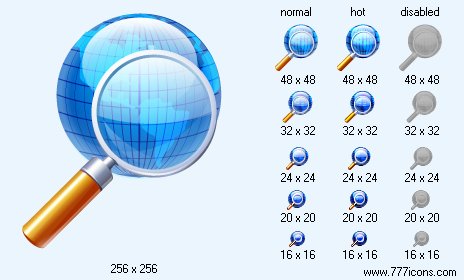


|
| ||||||||
|
|
Locate Icon |
|
Image sizes: 256x256, 48x48, 32x32, 24x24, 20x20, 16x16
File formats: BMP, GIF, PNG, ICO
When bad design becomes the standard
Creating websites has now become easier: if you do not know how you draw a certain element of page design, all you need to do is go to the twenty most visited sites on the Internet and see how they made this item.* If 90% or more of these sites formalized this element of the same, then it's design was the de facto standard, and you must comply with this standard. * If 60-90% of these sites drawn up this element of the same, then this design is very popular and you should obey it, unless your alternative design does not increase the usability elements of at least 50%. * If less than 60% of these sites drawn up this element of the same, it means that it is not worked out the dominant standard, and you are free to invent your own design. But even in this case, if there are options, each of which is used by at least 20% of large sites, you should limit your imagination and select one of the nourishment is already familiar to users, unless your alternative design element does not increase the convenience of using at least 25 %, compared with the best available options.
Naturally, the interest derived from my own reflection. At present it is still too little research is conducted in the theory of constancy, to specify exactly how many sites should take a certain design, that it became generally accepted rules or standards. Similarly, we do not know exactly how many users suffer in violation of the interface "two levels of expectations", although we are absolutely certain that it does not give them pleasure.
Therefore, I recommend to follow the accepted rules, even in cases where your design, taken separately, looks better than the conventional. The point is that Web sites do not live in isolation from each other: the visitors that come to your site, expect that it will work as they used to.
Organization of information and implementation problems: no standard
Of course, actually craft web design is extremely difficult because it is associated with the creation of information architecture and order of tasks. There are no standards for these items yet. Each site addresses these issues on their own way, as each of the sites linked to the specific information and their specific tasks.
Some aspects of information architecture has already began to take shape generally accepted rules: the majority of corporate sites certainly have sections on "Products / Products" and "About us / About Company". Moreover, the section "About us" as a rule contains information for investors and visitors, job seekers, as well as general information about the history of the company and its leadership. Address of the company and map them also have a section "About us", but it's not considered long-established rule, as, for example, many sites use a different information architecture, and place the data in the special section "Contact Us". Because users often expect to find a company address in the section "About us", the web site, place this data in another partition, should be cross-referenced with the section "About us" section "Contacts".
Copyright © 2006-2022 Aha-Soft. All rights reserved.
|

